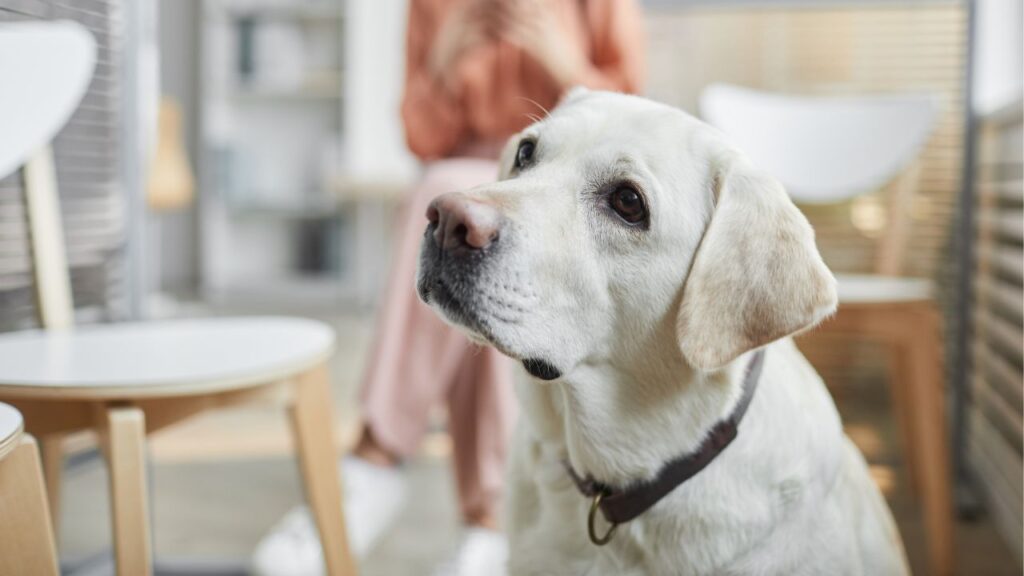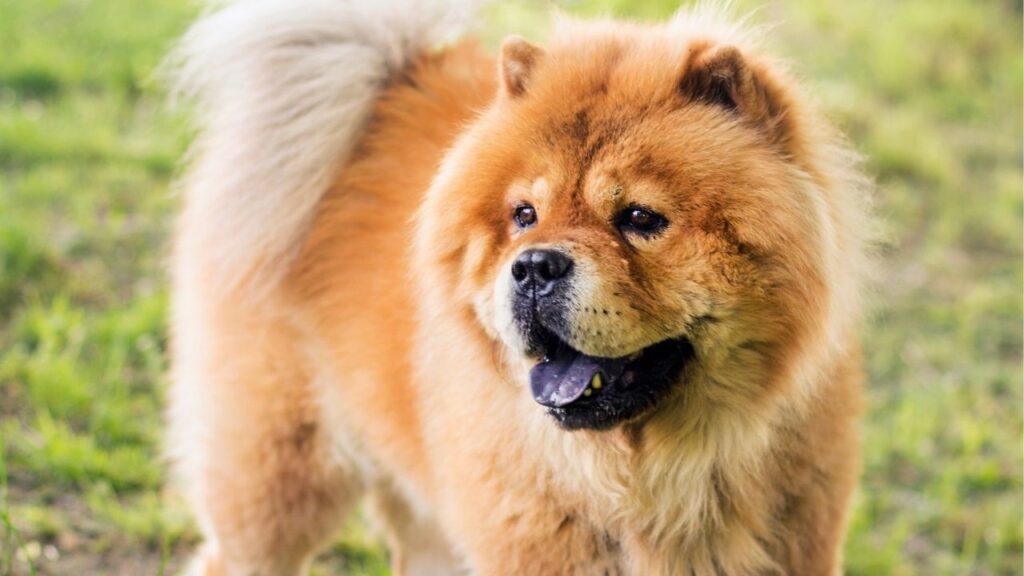The mitotic index provides valuable information about your dog’s cancer, and it should be included on any pathology report. It gives you an idea of how fast a tumor is growing, which can help determine your dog’s prognosis – or the expected course of progression of your dog’s cancer – and can help with making important treatment decisions.
Key Takeaways
- Mitosis is a normal process in the body, the division of cells to form new ones.
- The mitotic rate or index is how fast cells divide.
- Different types of tissues have different mitotic rates. Tissues that regenerate faster (such as skin) usually have a higher mitotic index than those that normally proliferate more slowly.
- Cancerous tissues generally have a higher mitotic index than non-cancerous tissues. This is because cancer cells are abnormal and usually divide faster than the normal cells they arise from.
- A high mitotic index means that a tumor is fast-growing, and often (but not always) means the tumor is more aggressive than those with a lower mitotic index.
- The mitotic index is mainly used to estimate the behavior of certain tumors.
- It can help you and your veterinarian know what to expect in terms of how your dog’s cancer is likely to progress.
- It can help diagnose whether the tumor is benign or malignant for some cancers.
- For most cancers, a mitotic score closer to 1 is better than a higher score; the higher the number, the faster the tumor is growing.
What Is the Mitotic Index?
Mitosis is the process of cell division or replication. This process is visible with a microscope and gives us some information on the behavior of a tumor. The mitotic index (MI) is a scale or measure of mitosis in a tumor sample.
The word “index” is used to indicate a measure of something. It’s not a specific type of measurement. So the mitotic index might be measured in different ways. For example, here are two ways:1
- the percentage of cells in a tumor sample that are actively dividing
- the ratio of cells that are actively dividing compared to the number of cells that are not actively dividing
Veterinary pathologists often call a third measurement the mitotic index.
Mitotic Count May Be Used as the Index
In veterinary medicine, most pathologists actually use a mitotic count, not a percentage or ratio. Their simple count measurement is what you will see on your dog’s pathology report as the mitotic index.
- Mitotic count is the number of mitotic figures (cells in the process of dividing to make two cells) per high-power field (HPF).
- HPF refers to the visible area seen through the microscope when it is magnified at 400x.1,2
In the simplest terms, veterinary pathologists look at a tumor sample under a microscope magnified at 400x, and count the number of cells undergoing mitosis. That’s the number they report on the pathology report.
While this system isn’t quite as precise as other mitotic indices, it is simpler to understand and still gives valuable information about certain types of tumors.1
Why Is the Mitotic Index Important?
A faster mitotic rate – also called a higher mitotic index – means that more cells within the tumor sample are dividing. More cells dividing indicate it it is growing faster. In general, tumors with a higher MI are more aggressive, but that is not always the case.1
The Mitotic Index Formula
When a tumor sample is sent out for histopathology, the mitotic index should be part of the pathology report that results.
First, your veterinarian will take a biopsy. This may be a small sample of the tumor, or sometimes it is the entire tumor.
The biopsy will be preserved and sent to a lab for evaluation. Once at the lab, the sample will be cut into skinny slices, put on slides, and stained so that a pathologist can see different structures within the tissue sample when looking at it through a microscope.
The pathologist will then look at the slides under a microscope and count the number of mitotic figures that they see across ten different high-power fields to get the mitotic count.
For example:
- If the pathologist sees seven dividing cells over those ten fields, the mitotic count/mitotic index will be reported as “7.”
- If the report says “7 per HPF,” the mitotic index is actually 70 (7 dividing cells x 10 fields = 70).
You don’t have to memorize this formula or even try to remember what numbers are “good” or “bad.” It’s more important to ask your veterinarian what the mitotic index on your dog’s pathology report means for your dog’s case and treatment strategies.
Veterinary oncologist Dr. Brooke Britton explains what a mitotic index measures and why it is useful in some tumor types on DOG CANCER ANSWERS.
What It Means for Your Dog’s Cancer
The mitotic index is just one piece of the puzzle when evaluating your dog’s cancer and making treatment decisions. It is helpful to know, but the mitotic index is not a hard-and-fast number. It may change.
- The mitotic index is just a snapshot in time and cannot guarantee how a tumor will behave.
- The tumor growth rate can vary throughout the tumor’s “lifecycle.”
- Some regions of a tumor may be more active than others.
For example, large tumors tend to be most active on the edges, while the center of the tumor is largely dormant or even starting to die off.
Depending on where the biopsy is taken from, the pathologist could get dramatically different results when they count cells in mitosis.
Samples taken from the center of the tumor might have a low mitotic index, and samples taken from the outside edge of a large tumor might have a very high mitotic index.
Because of this, larger samples are ideal because they give the pathologist more information to work with.
Most pathologists will scan many slides before choosing where to make a mitotic count to ensure they are looking at a section that is most representative of the tumor as a whole.
A Higher Mitotic Rate Is Often Associated with More Aggressive Tumors
A higher mitotic index generally means the tumor is more aggressive and faster growing. This helps your veterinarian and/or oncologist plan treatments.
Your surgeon will take wider margins when removing the mass to be sure it is all removed.
Your oncologist might also recommend chemotherapy or radiation after surgery to target any metastasis that might be present.
This is not true for all cancers, however. Plasma cell tumors, for example, often have a high mitotic index and are fast-growing. However, they don’t usually metastasize, and surgery alone is usually curative for smaller masses.
So even though they have a high mitotic index, your oncologist might not think follow up chemotherapy or radiation is necessary for plasma cell tumors.
The mitotic index has proven to be a good indicator of prognosis for some cancer types. Here we have identified specific mitotic index numbers that can help guide treatment decisions based on prognosis.
Hemangiopericytoma
The mitotic index is prognostic for hemangiopericytomas, meaning that tumors with an mitotic index less than 9 usually have better survival times than those with an mitotic index greater than 9.3
Mammary Tumor
The mitotic index is diagnostic for mammary tumors, meaning it is useful for determining if a tumor is benign or malignant.
- One study found that malignant mammary tumors in dogs had an average mitotic index of 36 (ranging from 7 to 65).5
- Another study comparing benign and malignant tumors calculated the mitotic index as a ratio and found that benign tumors ranged from 0.63-0.9 while malignant tumors ranged from 1.08-4.19.4
Mast Cell Tumor
The mitotic index is prognostic for mast cell tumors. Dogs with a mitotic index of 5 or lower generally have better survival times.6
Melanoma
The mitotic index is prognostic for melanoma. Tumors with a mitotic index greater than 3 are usually more aggressive and have a poorer prognosis.7
Soft Tissue Sarcoma
The mitotic index is prognostic for soft tissue sarcoma.8
- Tumors with a mitotic index under 10 are usually classified as grade 1 and have a better prognosis.
- Tumors with an MI over 19 are generally classified as grade 3 and usually have a poorer prognosis.
Splenic Non-angiomatous and Non-lymphomatous Tumors
The mitotic index is prognostic for non-angiomatous and non-lymphomatous tumors – those that are not made up of blood vessels and are not lymphoma – including tumor types such as leiomyosarcoma, chondrosarcoma, osteosarcoma, fibrosarcoma, histiocytic sarcoma, and liposarcoma.9
Dogs with these tumor types and a mitotic index less than 9 typically have improved survival times over those with a mitotic index greater than 9.2,10
- Meuten DJ, Moore FM, George JW. Mitotic count and the field of View Area. Veterinary Pathology. 2015;53(1):7-9. doi:10.1177/0300985815593349
- Mukaratirwa S. Prognostic and predictive markers in canine tumours: Rationale and relevance. A Review. Veterinary Quarterly. 2005;27(2):52-64. doi:10.1080/01652176.2005.9695186.
- Santos, S. V., Torres, L. N., da Silva, T. C., et al. Canine hemangiopericytomas: cell proliferation and apoptosis in the perivascular, storiform and epithelioid histological subtypes and their significance for prognosis. Braz J Vet Pathol. 2009; 2(1): 23-8.
- Kumar, P., Kumar, R., Pawaiya, R. S., & Puttaswamy, M. B. Diagnostic significance of mitotic index and AgNOR count in canine mammary tumours. Braz J Vet Pathol. 2010; 3(1): 41-45.
- Chocteau F, Abadie J, Loussouarn D, Nguyen F. Proposal for a histological staging system of mammary carcinomas in dogs and cats. part 1: Canine mammary carcinomas. Frontiers in Veterinary Science. 2019;6. doi:10.3389/fvets.2019.00388.
- Romansik EM, Reilly CM, Kass PH, Moore PF, London CA. Mitotic Index Is Predictive for Survival for Canine Cutaneous Mast Cell Tumors. Veterinary Pathology. 2007;44(3):335-341. doi:10.1354/vp.44-3-335
- Smedley RC, Spangler WL, Esplin DG, et al. Prognostic Markers for Canine Melanocytic Neoplasms: A Comparative Review of the Literature and Goals for Future Investigation. Veterinary Pathology. 2011;48(1):54-72. doi:10.1177/0300985810390717
- Dennis MM, McSporran KD, Bacon NJ, Schulman FY, Foster RA, Powers BE. Prognostic Factors for Cutaneous and Subcutaneous Soft Tissue Sarcomas in Dogs. Veterinary Pathology. 2011;48(1):73-84. doi:10.1177/0300985810388820
- Liptak JM. Splenic Tumors. Animal Cancer Surgeon. http://www.animalcancersurgeon.com/abdominal-tumors-spleen. Published March 6, 2017. Accessed March 2, 2023.
- Spangler WL, Culbertson MR, Kass PH. Primary Mesenchymal (nonangiomatous/nonlymphomatous) neoplasms occurring in the canine spleen: Anatomic classification, immunohistochemistry, and mitotic activity correlated with patient survival. Veterinary Pathology. 1994;31(1):37-47. doi:10.1177/030098589403100105.
Topics
Did You Find This Helpful? Share It with Your Pack!
Use the buttons to share what you learned on social media, download a PDF, print this out, or email it to your veterinarian.









